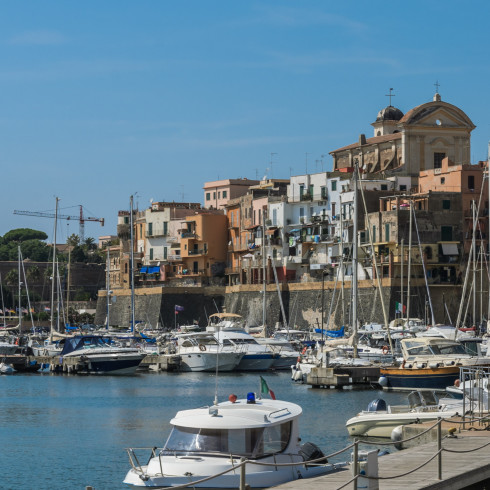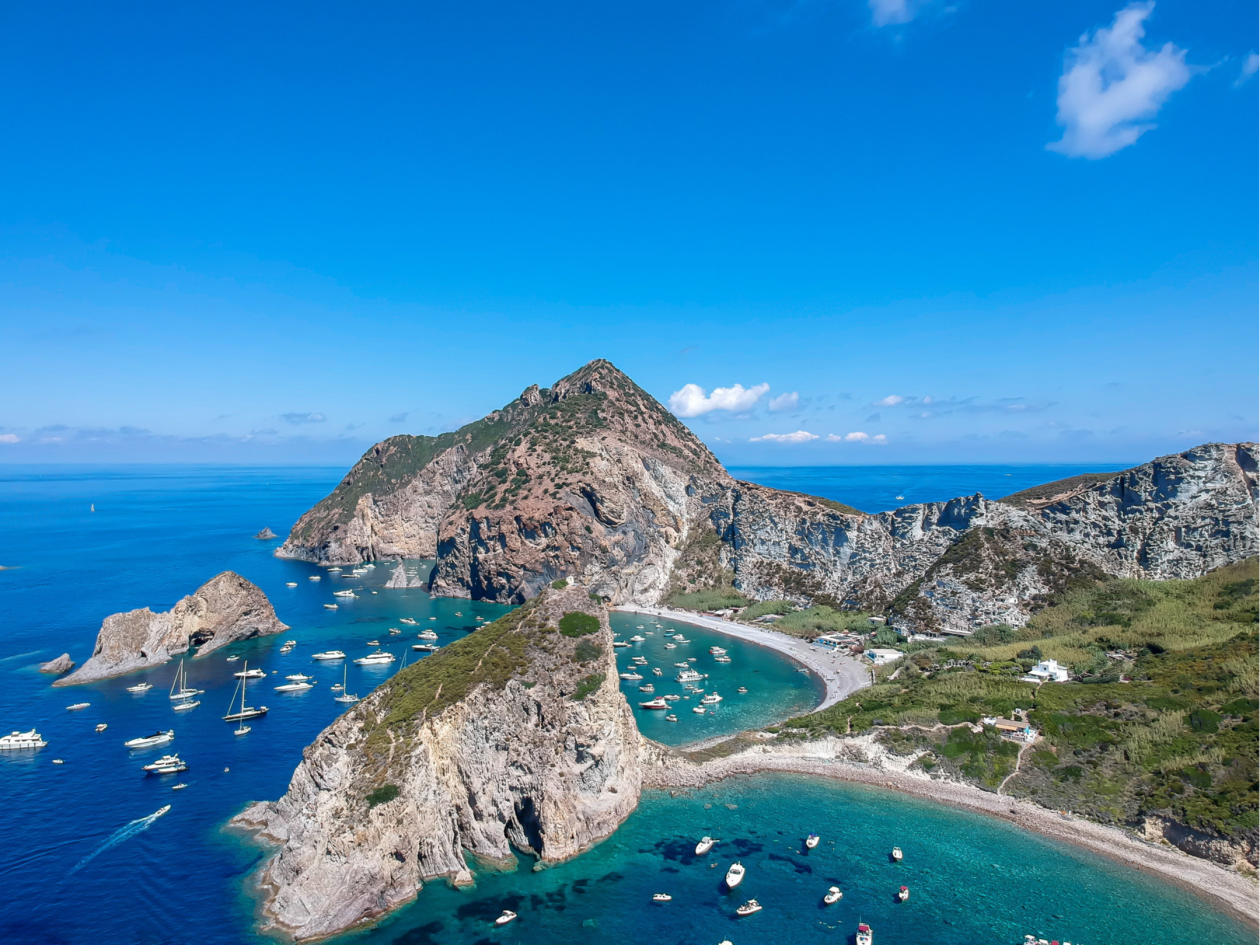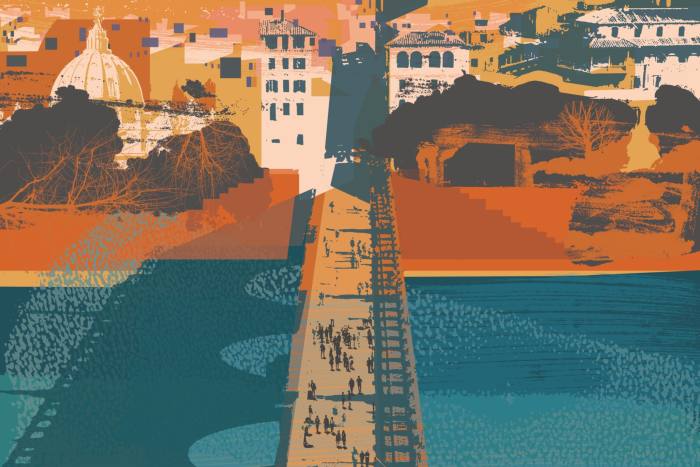Magical sailing destinations near Rome
This article is part of a guide to Rome from FT Globetrotter
It’s easy to forget how Rome, with its gladiator stadiums and monumental fountains, sits a mere 45-minute drive from the coast. With a 7,600km shoreline, it is no wonder Italians are such nautical creatures. The popular seaside image of my compatriots is one of smug sunbathers eating lasagne in Speedos. But as an Italian from the Tuscan coast raised on sports dinghies and catamarans, I can attest that that is not the entire picture.
Romans are, in fact, a very active bunch. Their atavistic call to the high seas harks back millennia, with many a mythic tale such as emperor Nero’s attempt to drown his mother in a custom-made leaky boat. More recently, in 1983, the first-ever Italian competitor to take part in the Louis Vuitton Cup, the qualifying regatta for the America’s Cup, was Azzurra, a boat designed in Rome. At the Tokyo 2020 Olympics, Roman Caterina Banti snapped up the sailing gold medal with Ruggero Tita on the extraordinary foiling catamaran Nacra 17.

There are plenty of ports to sail from near Rome: the wonderful coastal towns of Gaeta, Nettuno, Ostia, Circeo, Fregene, Fiumicino and Anzio, are all a reasonable drive from the city. Sailing weekends can be booked via Rome’s excellent sailing schools such as Altura, operating tours and sailing classes from all over the Lazio region. But if you don’t have weeks to spare, I recommend you steer your bow towards the Tuscan Archipelago from Monte Argentario near the lovely coastal town of Orbetello, or to the Pontine Islands, setting sail from the port of Nettuno. Despite being a life-long, yet staunchly amateur, sailor and not-so-easily impressed Italian, I am continually stunned by the sheer beauty of these islands and their cliffs — the inspiration for so much poetry and legend.
Some attribute Argentario’s name to the silver colour of the water surrounding it; others claim it derives from an ancient Roman aristocratic family, the Domizi Enobarbi, who were argentarii, or money lenders. This once-volcanic semi-island emerges vertically from the Tyrrhenian Sea, its harsh rocky cliffs overhanging secluded pebbled beaches, many only accessible by boat.
Later that night, we make for Ventotene, known as the island che vento tiene (endowed with much wind). Its story is of curse and exile, with historical roots that run deep and close to Rome — and the rest of Europe. Called Pandataria (meaning “dispenser of all goods”) by the Greeks, Ventotene became a place of exile as early as imperial Roman times. Augustus shipped his daughter Julia here, following charges of adultery, then Nero expelled his wife Octavia to the island so he could be with his new mistress Poppea. In the fascist era, Ventotene’s remoteness made it a favoured site to imprison and torture anti-regime militants and dissidents, including the future Italian president Sandro Pertini. The circular Bourbon prison on the islet of Santo Stefano is open to visitors.
On Ventotene the air is surprisingly still. The narrow Roman port, with its ancient arches smoothed by centuries of wind, is packed with improvised dockings, double-parked sailboats and motorboats. Crew member and historian Diego tells us that while incarcerated, antifascist militants Altiero Spinelli and Ernesto Rossi wrote the Ventotene Manifesto, an outline for a democratic federation of Europe. “In Brussels you’ll find a [European parliament building] named after Altiero Spinelli,” he says. As we stroll back to the port, I notice a tiny square is called Piazza Europa — a sign of its cosmopolitan past.

But of all the Pontines we explore, it is Palmarola that leaves us completely enamoured. With emerald water and an untouched hillside, the island is uninhabited (except for when the Fendi family use their holiday home there). As we moor up, we see a sea stack, the Faraglione di San Silverio, named after the sixth-century saint who legend says once lived there. We climb its steep steps to visit the little chapel on the top and take in a spectacular 360-degree view. Across the bay and next to a handful of old fishermen’s huts is the island’s only restaurant, O’ Francese, which has been serving Italian seafood dishes such as spaghetti allo scoglio and fritto misto to visitors since 1958.
On our last morning on Palmarola, we splash around in Cala Brigantina before exploring a gargantuan holed grotto, the Faraglione di Mezzogiorno. As I dive into the water one last time, I muse on the rich appeal of these islands: millennia-old, sung by poets, inspiration to philosophers and thinkers, home to fishermen and a magical destination for amateur sailors.
Where do you like to go sailing near Rome? Tell us in the comments
Follow FT Globetrotter on Instagram at @FTGlobetrotter
Cities with the FT

FT Globetrotter, our insider guides to some of the world’s greatest cities, offers expert advice on eating and drinking, exercise, art and culture — and much more
Find us in Rome, Paris, Tokyo, New York, London, Frankfurt, Singapore, Hong Kong, Miami and Toronto
This story originally appeared on: Financial Times - Author:Marianna Giusti
















